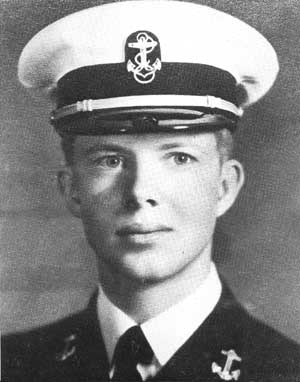
Do you know how many presidents served in the military? If you guessed 31, you’re correct! Military Times shares, “Even though military service is not a prerequisite to becoming president, members of the military develop significant leadership expertise during the time they train and serve.”
Of the 46 men who have become president, 12 reached the rank of general. George Washington, Ulysses S. Grant and Dwight D. Eisenhower demonstrated leadership and administrative abilities as generals that prepared them for the role as commander-in-chief. As Presidents Day approaches, we invite you to take a closer look at some of the most notable stories!

George Washington
Our first President, General George Washington led Patriot forces to victory in our nation’s War for Independence. He also presided at the Constitutional Convention of 1787, which established the U.S. Constitution and a federal government. Washington is known as the “Father of His Country” for his manifold leadership in the formative days of the new nation. His birthday is observed every third Monday of February often coinciding with Presidents Day. Explore the Biography of George Washington.
Abraham Lincoln
Lincoln served as a captain in the Illinois Militia and 16th President of the United States. He led the nation through its greatest moral, constitutional, and political crisis in the American Civil War. He preserved the Union, abolished slavery, strengthened the federal government and modernized the U.S. economy.
In February of 1926, Carter G. Woodson, writer and historian known to be the father of Black History Month, launched the celebration of “Negro History Week”, the precursor of Black History Month. He chose February because the month contained the birthdays of both Lincoln and abolitionist Frederick Douglass. In 1976, President and Veteran Gerald Ford continued the tradition, saying the celebration enabled people to “seize the opportunity to honor the too-often neglected accomplishments of Black Americans in every area of endeavor throughout our history.” See more of Lincoln’s Leadership.
Ulysses S. Grant
General Ulysses S. Grant, an Ohio-native, served as the 18th president of the United States from 1869 to 1877. Grant led the Union Army to victory in the American Civil War in 1865. The Northern victory at Gettysburg as well as the capture of Vicksburg marked a turning point in the war; it made Grant the premier commander in the Federal army. After the war, he briefly served as Secretary of War under President Andrew Johnson. Later, as president, Grant was an effective civil rights executive who signed the bill that created the Justice Department and worked to protect African Americans during Reconstruction. Read more about this Civil War Leader.


Theodore Roosevelt
Statesman. Politician. Conservationist. Naturalist. Writer.
President Theodore Roosevelt is considered by many historians as one of the five best presidents in our nation. When the Spanish-American War began in 1898, Roosevelt resigned from his post as Assistant Secretary of the Navy and formed the First U.S. Volunteer Cavalry Regiment, also called the Rough Riders, with U.S. Army Colonel Leonard Wood. He was posthumously awarded the Medal of Honor for his actions; the only president to have received the honor. Learn more about Roosevelt’s Story of Service.
Harry S. Truman
From 1905 to 1911, Truman served in the Missouri National Guard. When the United States entered World War I in 1917, he helped organize the 2nd Regiment of Missouri Field Artillery. He and his unit saw action in the Vosges, Saint Mihiel and Meuse-Argonne campaigns. Truman then joined the reserves after the war, rising eventually to the rank of colonel. From 1945 to 1953, Truman served as the 33rd President of the United States, assuming the role after President Roosevelt’s death. In his time as president, Truman implemented the Marshall Plan and established the Truman Doctrine and NATO to contain the expansion of Soviet communism. Read more about Truman’s Leadership.


Dwight D. Eisenhower
On February 11, 1943, General Eisenhower became the commander of the allied armies in Europe. The official title was the Supreme Commander of the Allied Expeditionary Force. He was responsible for planning and supervising the invasion of North Africa in Operation Torch in 1942–43 and the successful invasion of Normandy in 1944–45 from the Western Front. From 1953 to 1961, he went on to serve as the 34th president of the United States. Explore his Journey to the Presidency.
John F. Kennedy
During World War II, Kennedy commanded a series of PT boats in the Pacific theater and earned the Navy and Marine Corps Medal for his service; he is also the only president to have received the Purple Heart.
“Any man who may be asked in this century what he did to make his life worthwhile, I think I can respond with a good deal of pride and satisfaction, ‘I served in the United States Navy.'”
Kennedy was sworn in as the 35th president on January 20, 1961. As president, he served at the height of the Cold War, with the majority of his work focusing on relations with the Soviet Union and Cuba. On November 22, 1963, while riding in a presidential motorcade, Kennedy was assassinated by Lee Harvey Oswald. Today, Americans remember him for his leadership, personality and accomplishments. Learn more about the Life of John F. Kennedy.


Jimmy Carter
Carter graduated from the Naval Academy in 1946. His first assignment was an ensign on the USS Wyoming. After completing two years of surface ship duty, Carter applied for submarine duty. He served as executive officer, engineering officer and electronics repair officer on the submarine SSK-1. He served as the 39th president from 1977 to 1981. See more of Jimmy Carter’s Impact.
George H.W. Bush
On June 9, 1943, Bush became one of the youngest aviators in the Navy. He flew his first combat mission in May 1944, bombing Japanese-held Wake Island, and was quickly promoted to lieutenant (junior grade) on August 1, 1944. During a September 2 attack on a Japanese installation in Chichi Jima, Bush was downed by enemy fire and the only crew member to survive. He was later awarded the Distinguished Flying Cross for his role in the mission. By the end of his period of active service, Bush had flown 58 missions, completed 128 carrier landings and recorded 1228 hours of flight time. Read more about our 41st president.

These inspiring leaders prove the power of military service and the impact that Veterans have made and continue to make in our communities and country.






